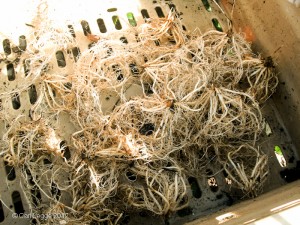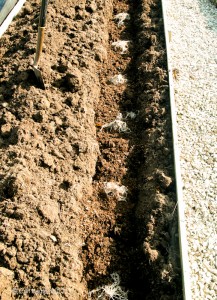People have enjoyed the luxurious taste of asparagus for millennia. The Ancient Egyptians ate it. And it appeared in The Roman Cookery of Apicius in the late 4th & early 5th Century CE.
Asparagus seasonal right now but only for a short period. Also in season is the wonderfully aromatic, anise flavoured french tarragon. As with many things that are seasonal at the same time, these two ingredients make perfect partners. We grow both of these ingredients on the smallholding, so I had a ‘free’ meal in the making when paired with eggs from our chickens.
In this recipe I complemented these ingredients with some wonderfully sweet and full tasting, 24 month’s old, piave cheese. This is a cow’s milk cheese from a small area in Italy with the same name. I was lucky enough to receive some from my Twitter friend in Rome, Carla Tomasi.
The finished tart tasted really smooth, rich and special. The fragrance of the shoots, herb and cheese was subtle: our senses were gently stroked. We had the tart with new potatoes lightly dressed in wild garlic mayo and steamed brassica shoots the first day; and with lemony cous-cous and tarragon marinated tomato salad the next.
If you’d like to know how to make this tart and see some tips for how to grow your own asparagus, please read on…
Asparagus, tarragon and piave tart recipe
I found a suitable recipe that I could adapt on the Good Food Channel.
I made my own shortcrust pastry using 50/50 spelt & plain white flour. When I blind baked the case, I painted it with some beaten egg after the first bake before I put it back in the oven to brown. This helps to seal the base.
I left out the shallot, used french tarragon instead of the parsley and piave instead of the gruyere. You could use parmesan, pecorino, gruyere or well matured cheddar cheese or vegetarian/vegan alternatives.
I had about a dozen shoots of asparagus, from 1cm thick to matchstick thin. So I blanched the bigger bits first for 4 minutes in total and then added the little bits for 2 minutes at the end.
That’s it. A very simple dish that you could use as a posh dinner party piece or even make in individual tartlets as a starter with a pretty garnish.
Tips to grow asparagus
You need to think for the long term and be patient if you grow asparagus. Specially if you grow it from seed.
We planted out these crowns in March 2011 and we’re taking our first shoots this year, 2012.

They are the variety Martha Washington. We sowed them and then repotted them each year. Before we planted them we washed off all the soil & compost so that we could lay the crowns out evenly.
The crowns were placed in a trench on a ridge of well rotted compost. The compost helps to give them a good feed and the ridge also helps a bit with drainage to avoid the crown rotting.

We covered over the crowns and then did our best to keep them weed free. The plants do not fare well if they have a lot of competition, so you’ll need to weed and/or mulch well.
We’re harvesting now and, this first year, we’ll stop harvesting at the end of the month. This gives the plants a chance to replenish their energy and build up bigger and better roots to feed and grow well for next year’s harvest. Once the asparagus fronds turn yellow in late summer/early autumn, we’ll cut them down to a few inches above ground level and give the plants a good mulch of well rotted compost. Then we wait… for the next delicious harvest: hopefully even more productive thatn the last.

Comments
9 responses to “Asparagus, tarragon and piave tart recipe”
I love asparagus and ‘proper’ French Tarragon but had never thought of combining the two together…great stuff-will definitely give it a go-thanks Carl!
I love changing recipes and experimenting with different cheeses. I must admit I am not a big fan of quiches – have to be in the right mood – but I like this flavour combo and might have to try as a frittata
Hi Urvashi, thanks for coming by. A frittata or baked eggeh is a great idea 🙂 I make a potato eggeh which has mashed potato mixed in with the egg. That might work well with the asparagus and tarragon too. Let me know how it goes.
That’s a beautiful pie, Carl. For my abilities, this would be a good challenge. The only pastry I’ve *ever* managed to make satisfactorily is Dan’s. Perhaps I should try your pie!
Hi Misky, it really is a very simple recipe and I’m no great pastry maker. Use the savoury shortcrust recipe in Dan’s book using 300g flour (150 spelt, 150 white) and 150g of butter or shortening. If you blind bake nicely, then the rest of the thing is a doddle. Knowing your other cooking skills, you’ll find this easy 🙂
Let me know how it goes when you do it
What good timing! I have just exchanged a dozen eggs for a bunch of asparagus and was just wondering what to do with it. That recipe is so easy to follow. Will let you know how I get on! Thanks for the inspiration.
Hi Karen, thank you very much – let me know how it goes 🙂
I have Russian tarragon seed to sow and one tiny plantlet that Brian brought home the other day from the garden centre, and asparagus crowns waiting for us to figure out how to squeeze them in somewhere. The road to good home grown vegetables is paved with intentions and you continue to inpsire me. Maybe we should just upstakes and move somewhere with more space…. What a lovely pie! I will try to make something similar with what I have available. One of your ocas went to Madame Fish yesterday, she promised to nurture it well. 🙂
Hi Joanna, I do hope you find space for the crowns, such a lovely veg to have this time of year.
Thank you for your kind words. Moving out of our suburban house was a big decision and something of a risk. I don’t think we’ve ver regretted it, despite some of the hardships. The space, view and clean air mean we’re constantly grateful we took the leap.
Glad you are spreading the oca love. I’d like to have reports on progress from you both. 😉